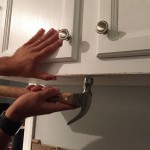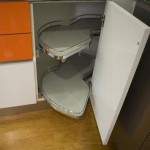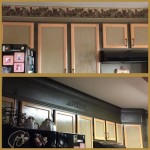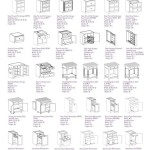How To Organize Kitchen Drawers for Maximum Efficiency
A well-organized kitchen is paramount for efficient meal preparation and a pleasant cooking experience. Often overlooked, kitchen drawers can become chaotic repositories of utensils, gadgets, and tools, leading to frustration and wasted time. Optimizing drawer space and implementing a systematic organization strategy can significantly improve kitchen functionality. This article presents a comprehensive guide to organizing kitchen drawers effectively, encompassing preparation, decluttering, and customized organization techniques.
Preparation: Assessing Needs and Planning
Before embarking on the organizational process, it is crucial to undertake a thorough assessment of current needs and establish a clear plan of action. This stage lays the foundation for a lasting and effective organizational system.
The initial step involves taking inventory of all items currently residing within the kitchen drawers. This includes utensils, measuring cups, silverware, spatulas, whisks, food storage containers, and any other kitchen-related items that are currently stored in drawers. Create a comprehensive list, categorizing items based on their function and frequency of use.
Consider the current layout of the kitchen and the placement of drawers in relation to various work zones. For example, drawers near the stovetop might be ideal for utensils used during cooking, while drawers near the sink could be dedicated to dish towels and cleaning supplies. Analyze how frequently each item is used and determine its most logical placement based on proximity to its primary use area. Infrequently used items can be stored in less accessible drawers or even relocated to other storage areas, such as pantries or cupboards.
Determine the organizational goals. Are the primary objectives maximizing space, improving accessibility, or enhancing the overall aesthetic appeal of the drawers? Clearly defining these goals will guide the selection of appropriate organizational tools and strategies. For instance, if the goal is to maximize space, drawer dividers and tiered organizers might be the most suitable choices. If the focus is on accessibility, a system that allows for easy visibility and reach is essential.
Measure the interior dimensions of each drawer, including length, width, and depth. This information is critical for selecting drawer organizers, dividers, and inserts that fit properly and maximize the available space. Accurate measurements will prevent the purchase of items that are too large or too small, ultimately saving time and money.
Decluttering: Eliminating the Unnecessary
Decluttering is an indispensable step in the kitchen drawer organization process. It involves removing unnecessary items, duplicates, and items that are no longer functional or used. This step not only frees up valuable space but also simplifies the organization process.
Begin by emptying each drawer completely. This provides a clear view of the available space and allows for a thorough cleaning. As each item is removed, critically evaluate its purpose and condition. Ask the following questions:
* Has it been used in the past year? * Is it still in good working condition? * Is there a duplicate item that serves the same purpose? * Is it truly necessary to keep this item in a kitchen drawer?
Items that fall into any of the following categories should be considered for removal: broken or damaged items, duplicates of frequently used items, items that have not been used in the past year, items that do not belong in the kitchen, and items that can be stored elsewhere.
Create three separate piles: one for items to keep, one for items to donate or sell, and one for items to discard. The items to keep will be organized and stored in the drawers. The items to donate or sell can be given to charitable organizations or sold online or at a garage sale. The items to discard should be disposed of responsibly.
Consider the potential for repurposing items. For example, old kitchen towels can be cut into cleaning rags, and broken utensils can be used for craft projects. Before discarding items, explore ways to give them a new life.
After decluttering, thoroughly clean the interior of each drawer. Vacuum or wipe down the drawers to remove any crumbs, dust, or debris. This creates a clean and fresh starting point for the organization process.
Customized Organization: Implementing Efficient Systems
Once the kitchen drawers have been decluttered and cleaned, the next step is to implement a customized organization system that maximizes space, improves accessibility, and enhances the overall functionality of the kitchen.
Drawer dividers are an essential tool for creating distinct compartments within the drawers. They help to separate different types of items, prevent clutter, and make it easier to find what is needed. Dividers are commercially available in a variety of materials, including plastic, wood, and metal. Adjustable dividers are particularly useful, as they can be customized to fit the specific needs of each drawer.
Drawer liners provide a non-slip surface that prevents items from sliding around and causing damage. They also protect the drawer bottom from scratches and spills. Liner options include rubberized liners, adhesive liners, and loose liners. Choose a liner material that is durable, easy to clean, and compatible with the drawer's interior finish.
Specific organizers can be used to organize different types of items, such as silverware, utensils, and food storage containers. Silverware organizers typically feature individual slots for forks, knives, and spoons. Utensil organizers often have larger compartments for spatulas, whisks, and other cooking tools. Food storage container organizers help to keep lids and containers neatly stacked and easily accessible.
- Silverware Organization: Utilize a silverware tray with individual compartments for each type of utensil. Consider expandable trays to accommodate varying drawer sizes.
- Utensil Organization: Group similar utensils together using drawer dividers or utensil holders. Store frequently used utensils closer to the front of the drawer for easy access.
- Food Storage Container Organization: Stack containers and lids separately using organizers designed specifically for food storage containers. Consider using a vertical organizer to maximize space.
- Spice Organization: Although often stored elsewhere, spices can be organized in drawers using tiered organizers or spice racks designed for drawers.
Utilize vertical space within the drawers by using tiered organizers or risers. This allows for storing more items in the same amount of space. Tiered organizers are particularly useful for storing spices, canned goods, or other small items.
Labeling drawers can be helpful for maintaining organization and ensuring that items are returned to their proper place. Use adhesive labels or label makers to clearly identify the contents of each drawer. This is especially useful for drawers that contain a variety of items or for households with multiple cooks.
Regular maintenance is essential for preserving the organization of kitchen drawers. Set aside a few minutes each week to declutter and reorganize the drawers. Return items to their designated spots after use and discard any unnecessary or broken items. Consistent maintenance will prevent the drawers from becoming cluttered and ensure that they remain functional and organized.
Consider the placement of frequently used items. Position items that are used most often in the most accessible locations within the drawers. This minimizes the need to reach for items and streamlines the cooking process. For example, measuring cups and spoons should be stored near the baking center, while cooking utensils should be placed near the stovetop.
Optimize drawer space by utilizing the full depth and width of each drawer. Avoid leaving empty spaces or gaps between items. Arrange items in a way that maximizes the available space and minimizes wasted space. For example, store longer items vertically or stack items neatly to conserve space.
When purchasing new kitchen gadgets or utensils, consider their storage requirements. Choose items that are compact and easy to store. Avoid purchasing duplicates of items that are already owned. This will help to prevent clutter and ensure that the kitchen drawers remain organized and functional.

How To Organize Kitchen Drawers Hallstrom Home

How To Organize Kitchen Drawers And Cabinets Shannon Gold Design

Top Small Kitchen Drawer Organization Tips Living Well Mom

My Top 10 Tips For Organizing Your Kitchen Drawers The Homes I Have Made

How To Organize Kitchen Drawers Hallstrom Home

Organized Kitchen Drawers The Reveal Citrineliving

How To Organize Kitchen Drawers Polished Habitat

Make Your Own Custom Drawer Organizer Diy Kitchen

How To Organize Kitchen Drawers Polished Habitat

Kitchen Drawer Organization How To Organize Your Drawers Organizing Ideas S
Related Posts








